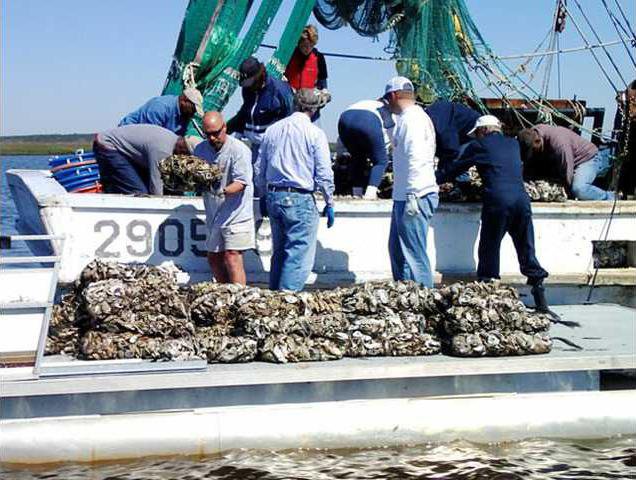A group of volunteers is doing its part to help revive and maintain marine life in the off the coast of south Bryan County.
Members of the Richmond Hill Chapter of the Coastal Conservation Association recently distributed about 28,000 pounds of bagged oyster shells to create an oyster reef in an effort to help build oyster reproduction in the area.
“We put (the bags) at the Florida passage — it’s basically in the Intracoastal Waterway at Marker 99 in between the mouth of the Ogeechee River and the mouth of Redbird Creek,” said Jon Seagraves, president of the Richmond Hill CCA chapter.
The first deployment comes nearly two years after planning began for the project, collecting shells and getting permits from the state Department of Natural Resources, Seagraves said.
After receiving permitting and approval from the DNR, he said more than 30 volunteers from the Richmond Hill CCA Chapter, the DNR and Ashland Water Technologies helped with the deployment of the bags on April 6.
The crew used local shrimp boat, the Grey Ghost manned by Hinton Arnsdorf, to deploy the bags.
“We have to put pallets down in the mud at the low water mark,” he said. “So we put 100 pallets down and we put out 812 bags of oysters — about 30- to 35-pound bags.
“We put (the bags) on top of the pallets, and what happens is the oyster spat will attach to those old oyster shells, and it’ll create a new oyster reef with living oysters, essentially. That process takes about a year to two years to become full grown oysters.”
Seagraves said the group decided to deploy the bags because April is the peak time when oyster spats hatch and drift with the currents to attach to the reef.
He said it is important to the group to help revive and maintain marine life so the future of local fisheries will thrive.
“It’s important to promote and protect our waterways and basically put habitat back into our estuaries instead of take habitat out,” he said. “I’d like to be able to take my children to these spots and catch fish, and know that our local group of guys had a hand in making these reefs. It’s important for us to give back locally.”
Chris Barr, vice president of the Richmond Hill chapter, echoed those comments.
“This is our effort in trying to make an annual contribution to preserve our coastal habitat, and try to get exposure and interaction with the local community to get them involved in order to revitalize our coast that everybody ultimately gets to enjoy,” he said.
Seagraves added the project couldn’t have been done without the work of volunteers.
“I’d like to give special thanks to Capt. Bob Barnette for coming up with the project, Hinton Arnsdorf for carrying the materials, the CCA members who came out to help and the Ashland volunteers who came out to help,” Seagraves said.
The Richmond Hill CCA Chapter is still collecting oysters shells at the Sterling Creek site on Highway 144 for future oyster reef deployment projects, he added.
Shell reefs being put in off Bryan


Sign up for our e-newsletters